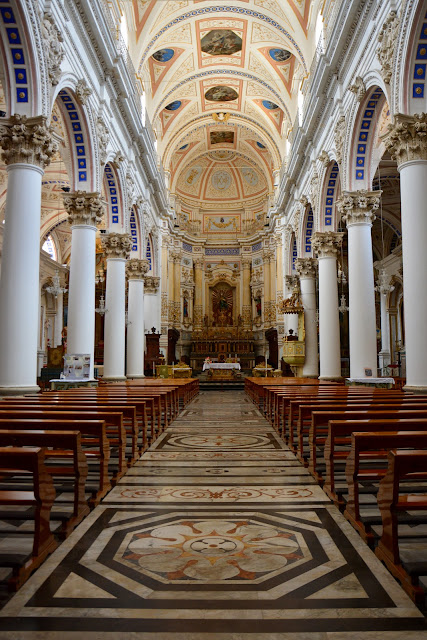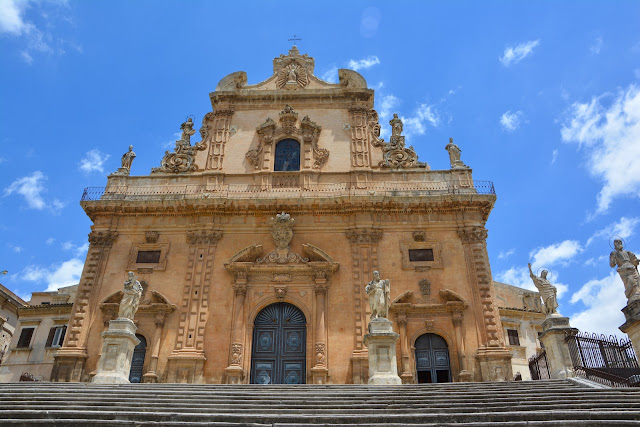Francesco gave us a marked up map with suggestions for sightseeing yesterday, for Ragusa and Modica, both nearby. We visited Ragusa first, built on hills between two valleys, the ancient part of the city is on the lower hill, with its beginning traced to the 2nd millennia BC, and successively ruled by the Carthagenians, Romans, Byzantines, Arabs, Normans, and then following the events of the Kingdom of Sicily since the 12th century. Ragusa suffered badly from the earthquake of 1693 and was substantially rebuilt, with the newer city built on the higher hill. Much of the substantial architecture rebuilt after the earthquake has a Baroque exterior. We are amazed at the wealth in the 1600's-1700's that built these cities! Ragusa is a city of about 75,000 today.
We drove just a few miles from Ragusa to Modica. A city of about 55,000, Modica was founded around 1100 BC, with a similar history to Ragusa. Modica is built primarily in a gorge, so has also suffered from flooding. One of the highest and longest (980') bridges in Europe joins two areas of Modica. After walking about Modica's palazzos and beautiful churches, we had a delicious lunch at a local trattoria. We visited a small chocolate store next to the trattoria, and bought their handmade organic grainy chocolate, that Modica is known for producing.
As we drive about this southeastern area of Sicily, we have been struck by how similar the terrain is to much of New Mexico and southern Arizona. Many plants are similar, with prickly pear, agave, and palo verde. The terrain is rocky and hilly. One very different feature of Sicily and much of Europe are the ancient walls of stone, thousands and thousands of miles of stone walls crisscrossing hills and mountains to form small fields or terraces for growing grapes or olive trees. All the stones laid by hand are beautiful.
We drove just a few miles from Ragusa to Modica. A city of about 55,000, Modica was founded around 1100 BC, with a similar history to Ragusa. Modica is built primarily in a gorge, so has also suffered from flooding. One of the highest and longest (980') bridges in Europe joins two areas of Modica. After walking about Modica's palazzos and beautiful churches, we had a delicious lunch at a local trattoria. We visited a small chocolate store next to the trattoria, and bought their handmade organic grainy chocolate, that Modica is known for producing.
As we drive about this southeastern area of Sicily, we have been struck by how similar the terrain is to much of New Mexico and southern Arizona. Many plants are similar, with prickly pear, agave, and palo verde. The terrain is rocky and hilly. One very different feature of Sicily and much of Europe are the ancient walls of stone, thousands and thousands of miles of stone walls crisscrossing hills and mountains to form small fields or terraces for growing grapes or olive trees. All the stones laid by hand are beautiful.









